Shoden-ji Temple was built in 1282 by 東巌慧安(Ean Togan) who is a Buddhist priest of the Rinzai sect.
The honorific mountain name prefixed to a temple’s name of this temple is “吉祥山(Kisshozan)”, and as the achievement that 東巌慧安(Ean Togan) prayed for peace at the time of war, this temple was named “吉祥山正伝護国禅寺(Kisshozan-shoden-gokokuzenji)” by Kameyama ex-emperor.
Therefore, the official name of this temple is “吉祥山正伝護国禅寺(Kisshozan-shoden-gokokuzenji)”.
In this temple, there is nothing but quiet and beautiful Japanese garden.
In addition, this temple is far from the center of Kyoto.
but that’s exactly what I want…
Sit in the veranda of the main hall where nobody is and look at the Karesansui (dry landscape) garden.
It is undoubtedly the best of luxury time.
Contents:
- About Shoden-ji Temple
- Karesansui (dry landscape) garden which is attributed to Enshu Kobori.
- The bloody ceiling where the remains of the fight of the Fushimi Castle are still left…
- Goshuin(shrine seal or stamp) of Shoden-ji Temple
- How to get to Shoden-ji Temple
1.About Shoden-ji Temple
Shoden-ji Temple is a small, quiet temple tucked away in the northern part of Kyoto, next to a small mountain. Its unique dry garden makes use of “borrowed scenery,” in which the distant Mt. Hiei-zan serves as one of the garden’s main elements, along with its beautifully-trimmed azalea bushes.
引用(citation):http://kyoto.travel/en/shrine_temple/147
Open:9:00~17:00
Admission Fee:400 yen(high school students or older),300 yen(junior high school student),200 yen(primary schoolchild or younger)
Adress:72, Nishigamokitachinjuancho, Kita-ku Kyoto-shi, Kyoto, 603-8847, Japan
Phone Number:+81-75-491-3259
Shoden-ji Temple is a temple of the Rinzai sect Nanzen-ji Temple group, and the official name of this temple is “吉祥山正伝護国禅寺(Kisshozan-shoden-gokokuzenji)”.
This is the 山門(main gate) of Shoden-ji Temple.
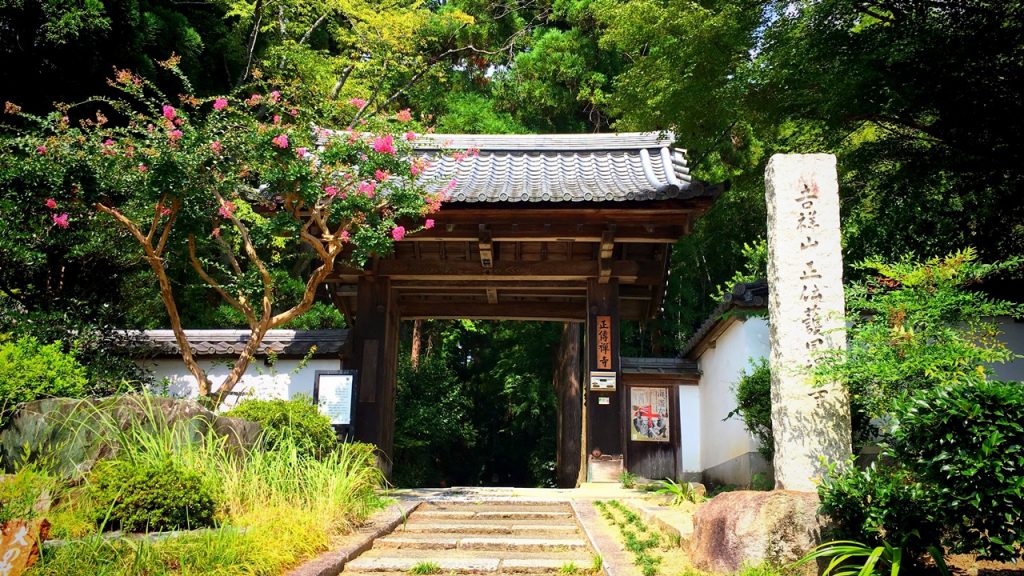
A mountain path goes on after we pass through the main gate.
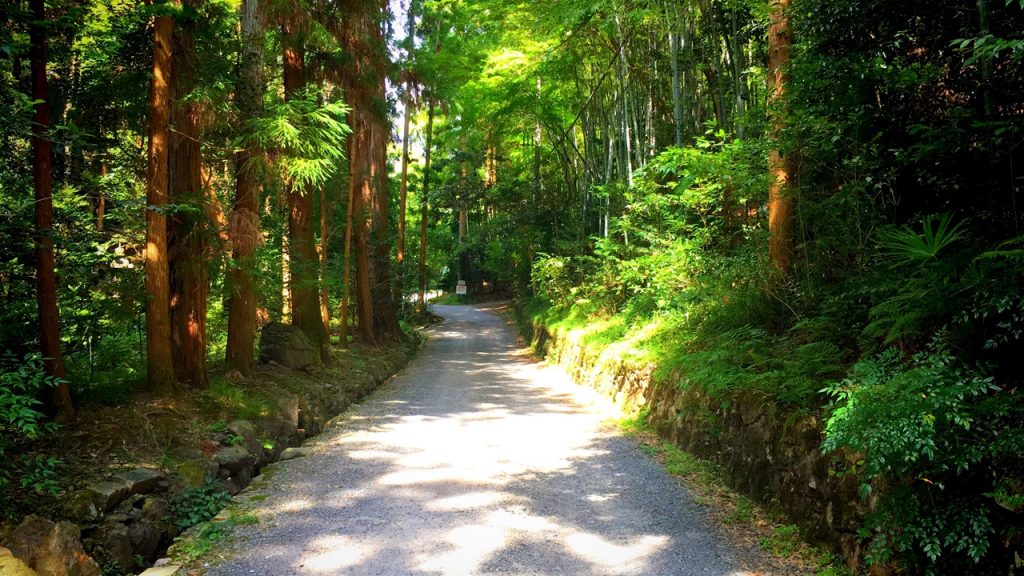
This is the gate of the approach to this temple.
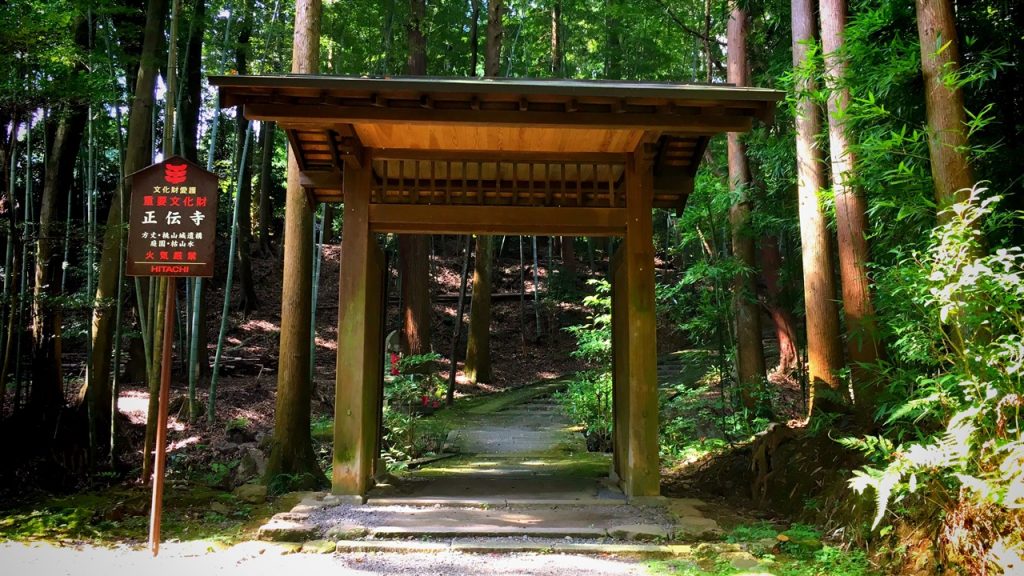
I walk the mountain path of approximately 250m from the main gate to the main hall.
In the season of the fresh green, this place gives us very good feeling. (○´艸`)
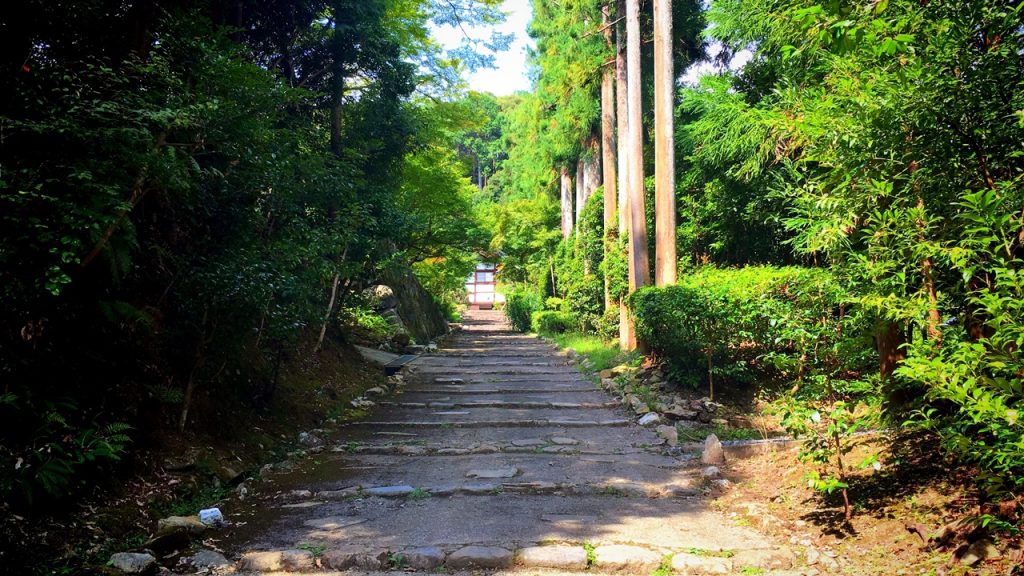
This is the 庫裏(Kuri(kitchen-cum-office of a Zen temple or monastery)).

2.Karesansui (dry landscape) garden which is attributed to Enshu Kobori.
The best highlight of this temple is the Karesansui (dry landscape) garden.
Because this garden is not so famous, it is very not crowded.
This garden is the Karesansui (dry landscape) garden which is attributed to Enshu Kobori who is a daimyo of the Azuchimomoyama era.
Sit in the veranda of the main hall where nobody is and look at the Karesansui (dry landscape) garden.
It is undoubtedly the best of luxury time.
■Youtube:正伝寺 小堀遠州が遺した枯山水庭園(Karesansui (dry landscape) garden which is attributed to Enshu KOBORI.)
The beautiful Karesansui (dry landscape) garden is spread in front of the main hall.
There was nobody on the day when I visited.
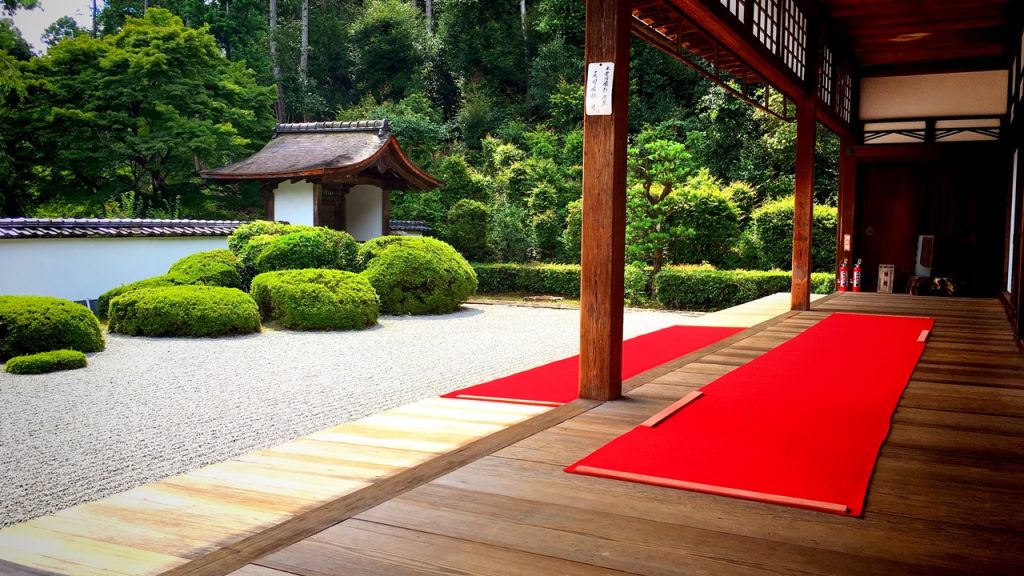
The trees of Satsuki are planted in the garden which is covered in white sand.
In the case of the common garden, a rock is put to express an island.
However, in the case of this garden, a tree is put in substitution for a rock.
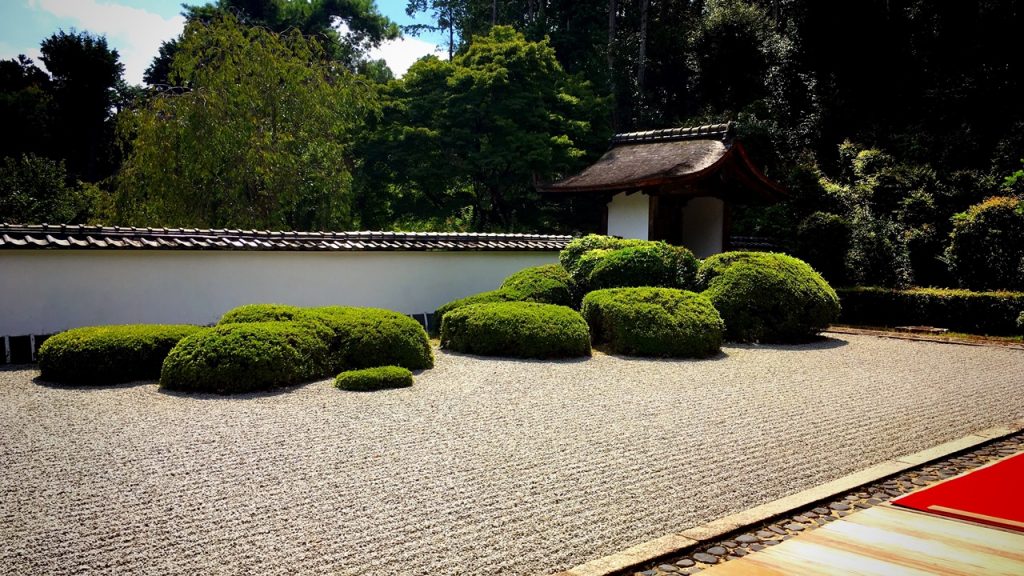
A tree of Satsuki form a line in order of 7 trees, 5 trees and 3 trees from right side.
It is so-called “the garden of seven, five and three”.
(The odd numbers such as “3”, “5” and “7” are said to be a happy number from old days.)
This garden is also called by another name called “獅子の児渡しの庭(The garden which carries a lion-cub from island to island.)”.
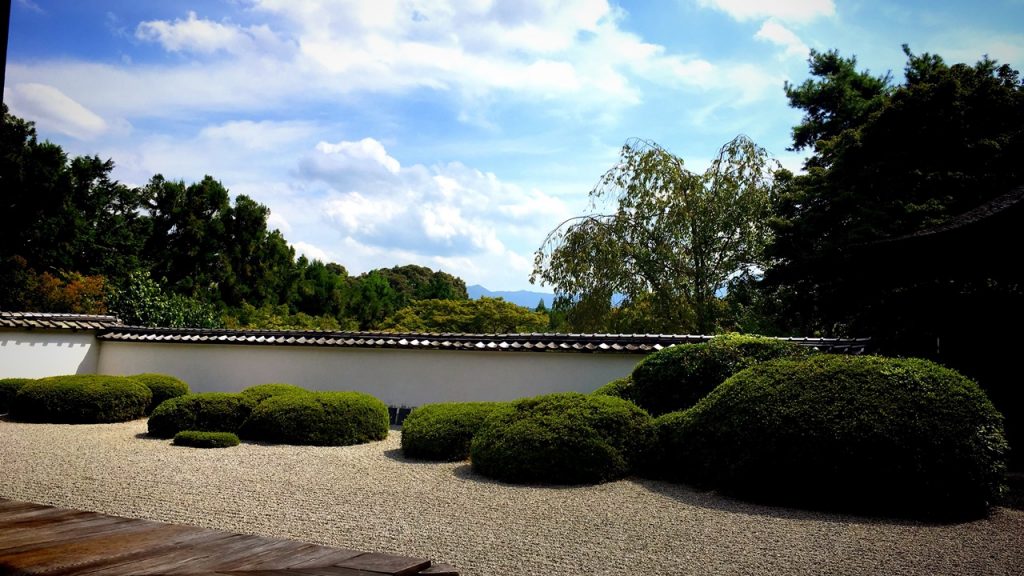
The gate in the depths is the 勅使門(Chokushi-mon Gate (gate for Imperial Envoys)).

This garden has the borrowed landscape of Mt. Hiei.

There is only quietness and the chirp of cicadas in this garden.

This temple and garden were favorite places of Mr. David Bowie.

3.The bloody ceiling where the remains of the fight of the Fushimi Castle are still left…
There are many stains on the ceiling of the main hall of this temple.
Actually, this stain is a bloodstain!!
There was the castle called Fushimi-Momoyama-jo Castle in old days in Kyoto, and the fight called “the fight of the Fushimi Castle” occurred in this castle in 1600.
So, many people were killed in this fight.
As a result, many bloodstains were scattered on the floorboards.
These floorboards of the Fushimi-Momoyama-jo Castle had been used for the ceiling of the main hall of this temple.
*We can also watch the bloody ceiling at some other temples.
↓The bloody ceiling of Genko-an Temple is here.↓
There is the blood ceiling on the ceiling of the main hall.
The main hall is appointed to an important cultural property.

The bloody ceiling in the Genko-an temple is a footprint, but the bloody ceiling of this temple is a handprint.
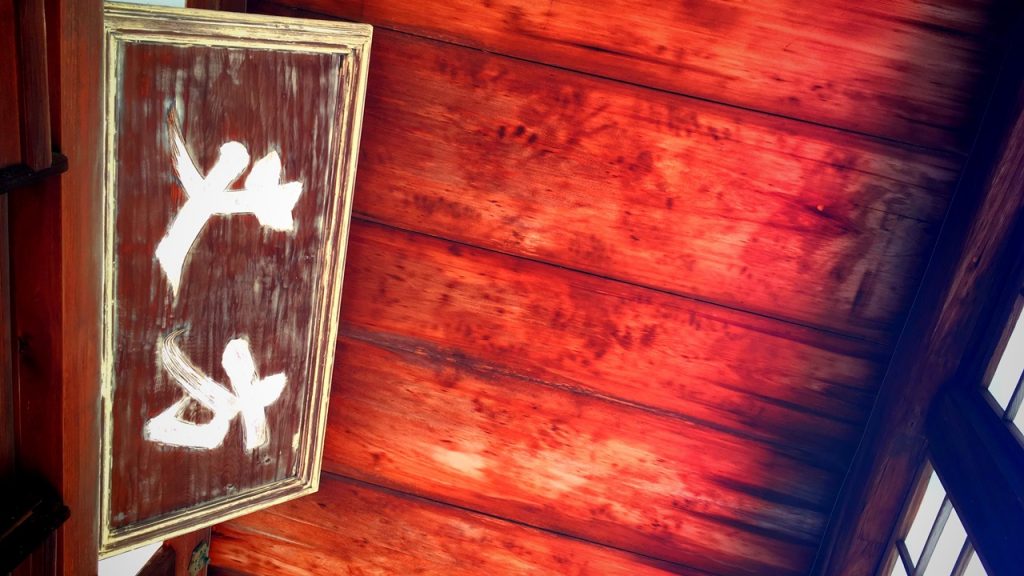
The fear of the fight is handed down from these bloodstain.

There is a fusuma picture which had been drawn by 狩野山楽(Sanraku Kanou) in the main hall.
This fusuma picture is appointed to an important cultural property.
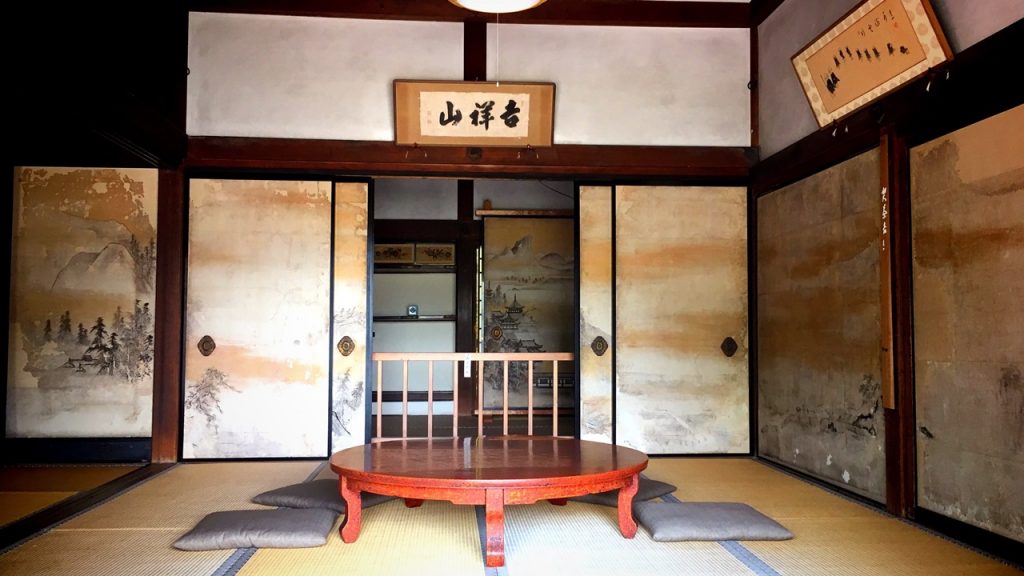
4.Goshuin(shrine seal or stamp) of Shoden-ji Temple
The word which can read as “佛心(Hotokegokoro)” is written to Goshuin with a sumi.
“佛心(Hotokegokoro)” is the word which means a spirit of merciful Buddha.
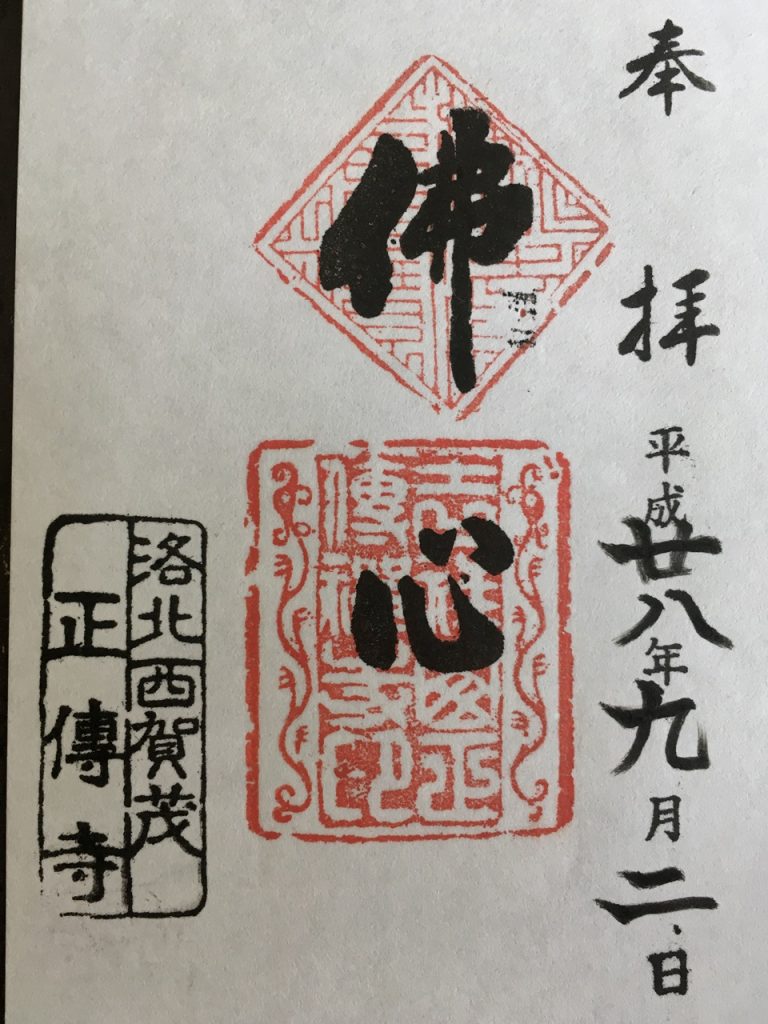
5.How to get to Shoden-ji Temple
The nearest station of Shoden-ji Temple is “Subway Karasuma Line Kitaōji Station”.
Let’s take a bus from Kita-Oji Station.
(Distance from the station to the destinations is approximately 4km. It is more than 1-hour walk from the station.)
■Kitaōji Station→Shoden-ji Temple (In the case of using the bus.)
[Go]
Kitaooji bus terminal, Kyoto City bus “1”,”37″,”特37″
From “Kitaooji bus terminal” → To “Jinkoin-mae” fare: 230 yen
[Return]
Jinkoin-mae Bus Stop, Kyoto City bus “1”,”37″,”特37″
From “Jinkoin-mae” → To “Kitaooji bus terminal” fare: 230 yen
■Jinkoin-mae Bus Stop→Shoden-ji Temple


How did you like it?
Please try to go.
Have a nice trip! XD
<Let’s search the sightseeing information of Kansai in Japan on ‘Japan’s Travel Manual‘!!>
<This site introduces the easiest way to get Japanese (Kansai) sightseeing spots to you.>

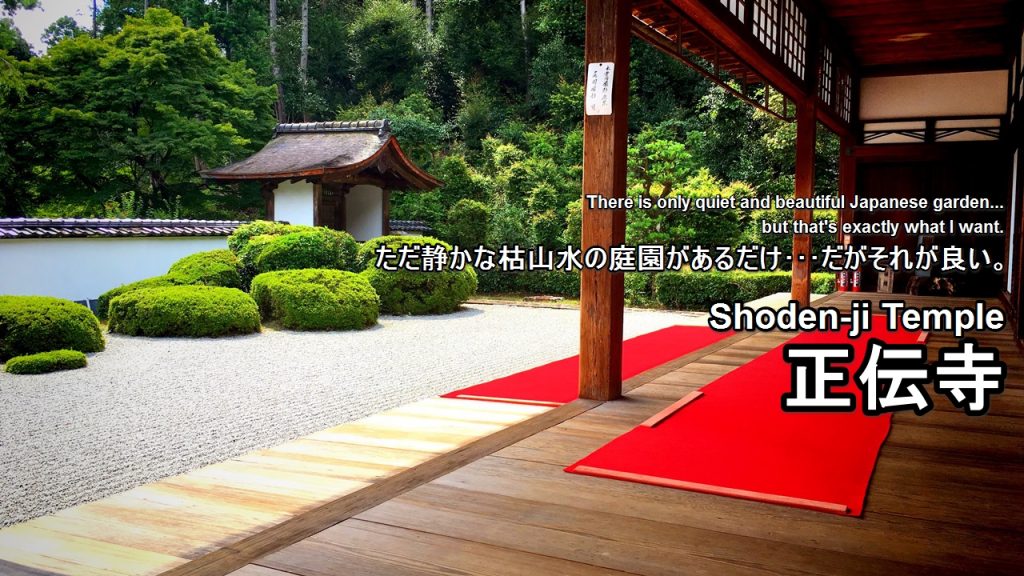

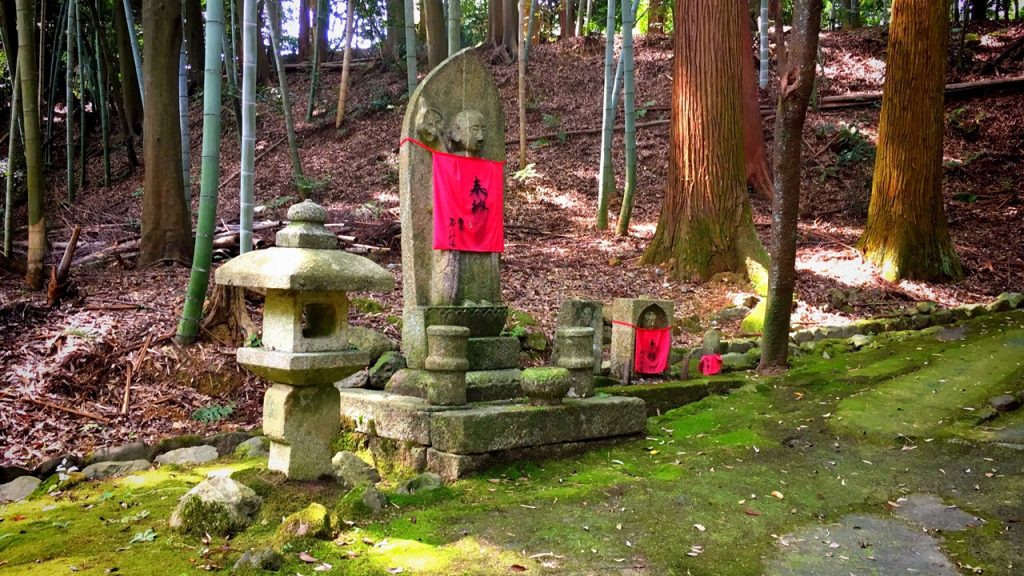
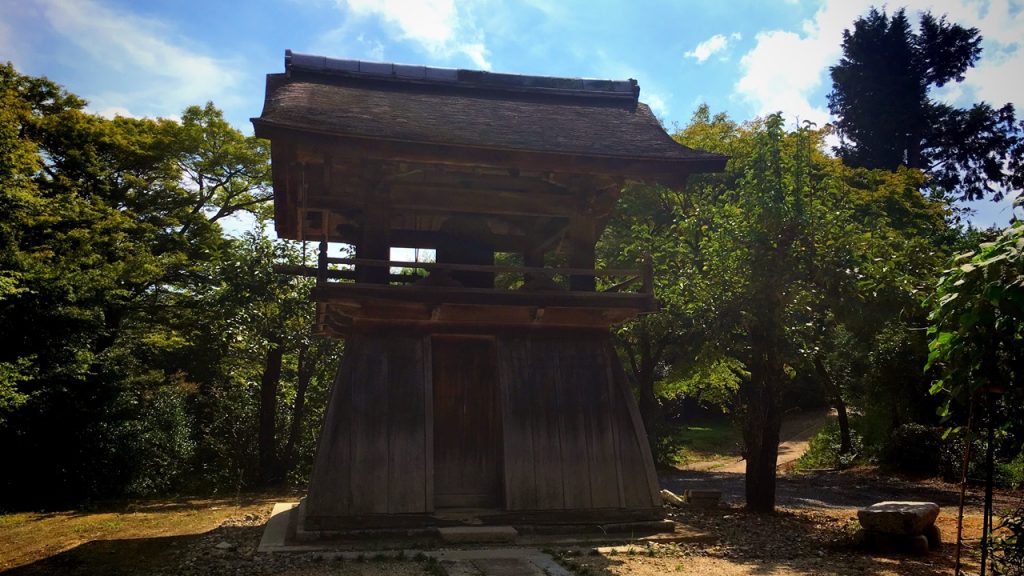
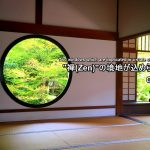



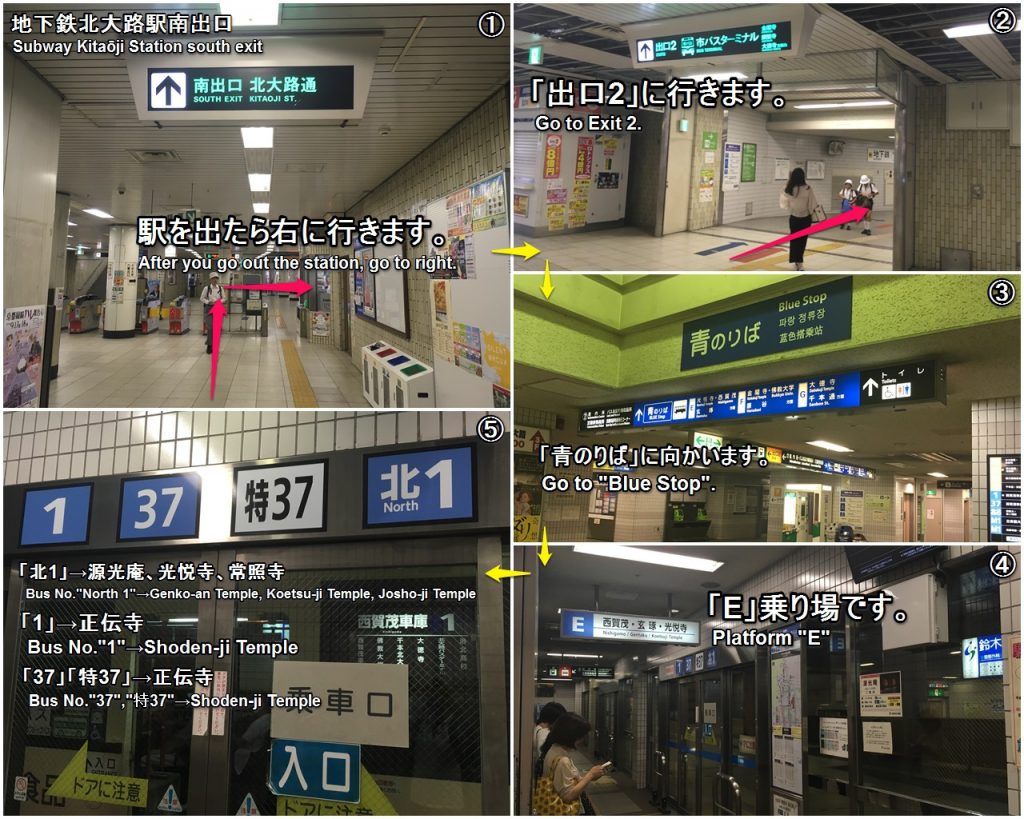

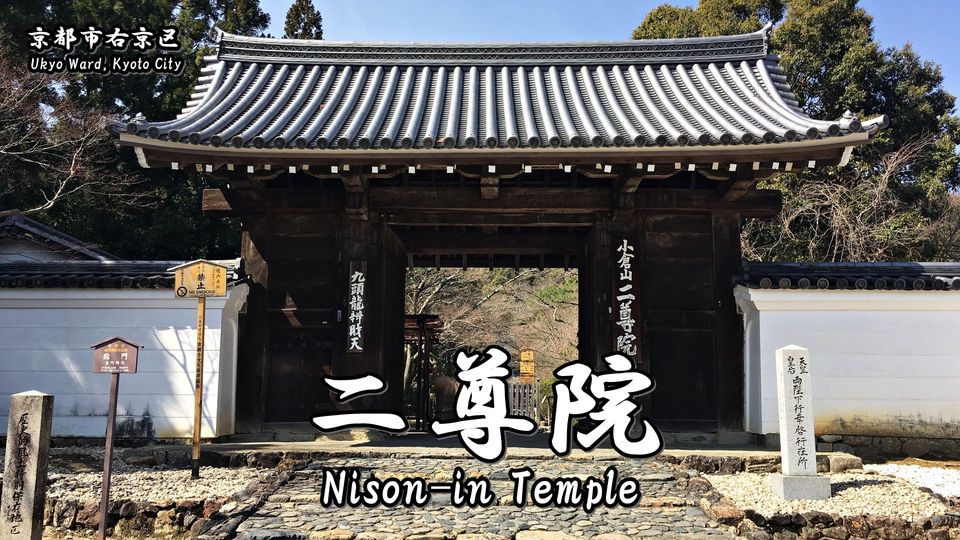
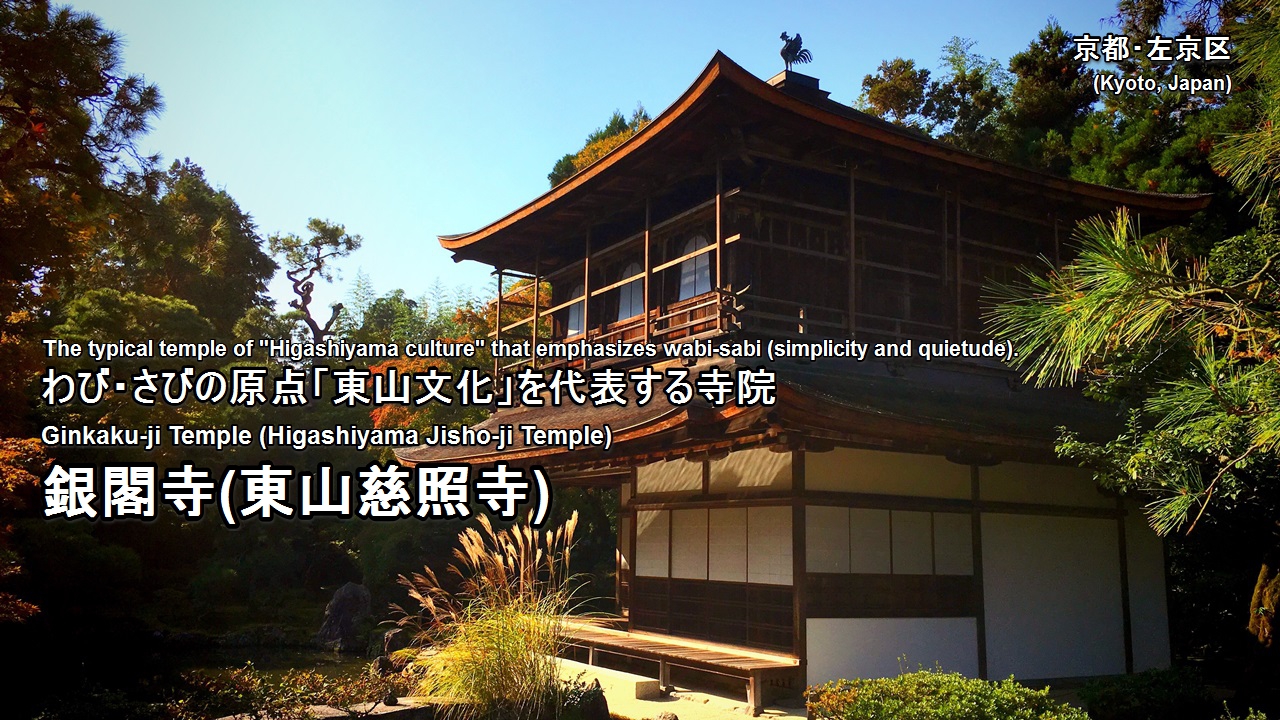
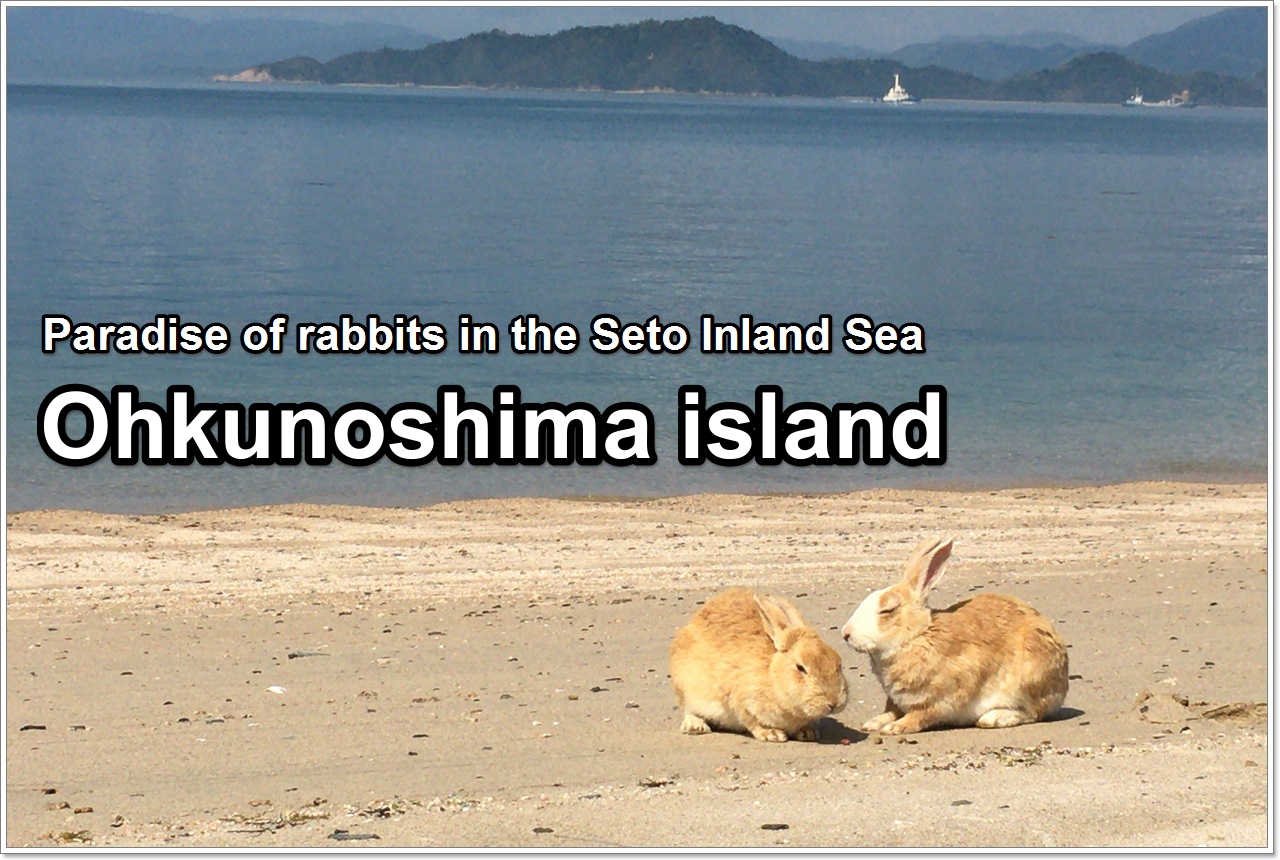
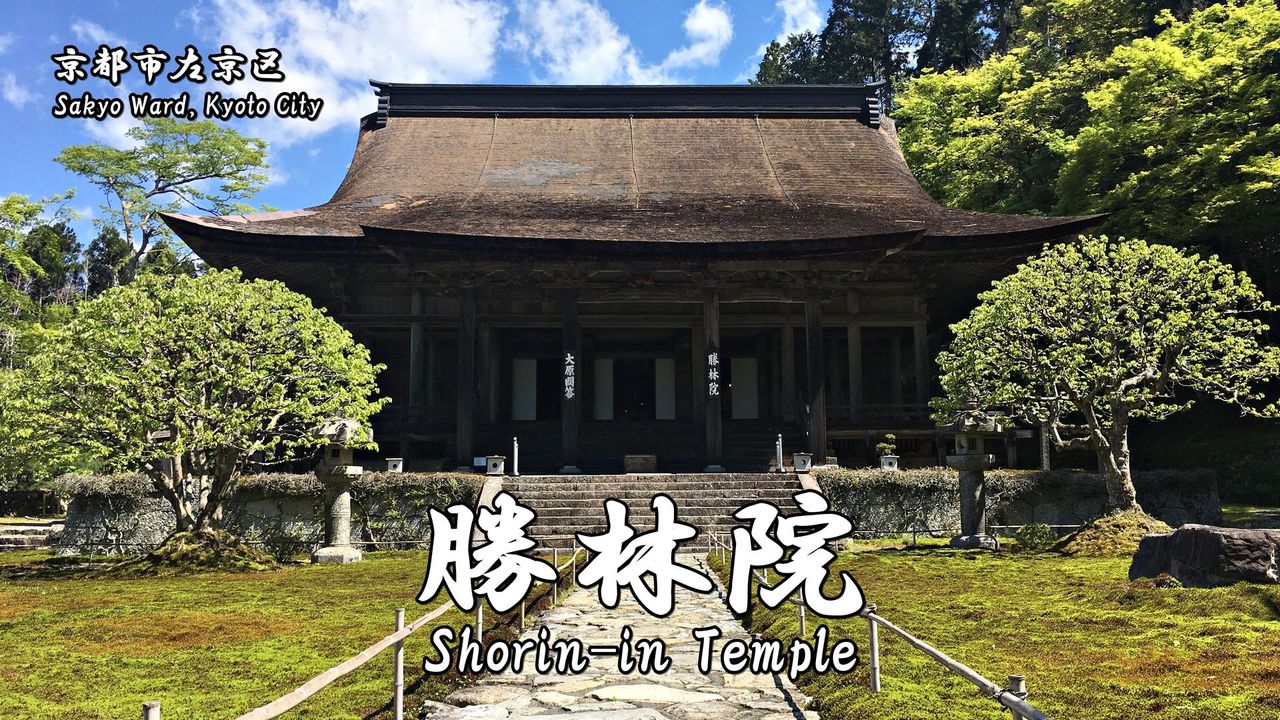

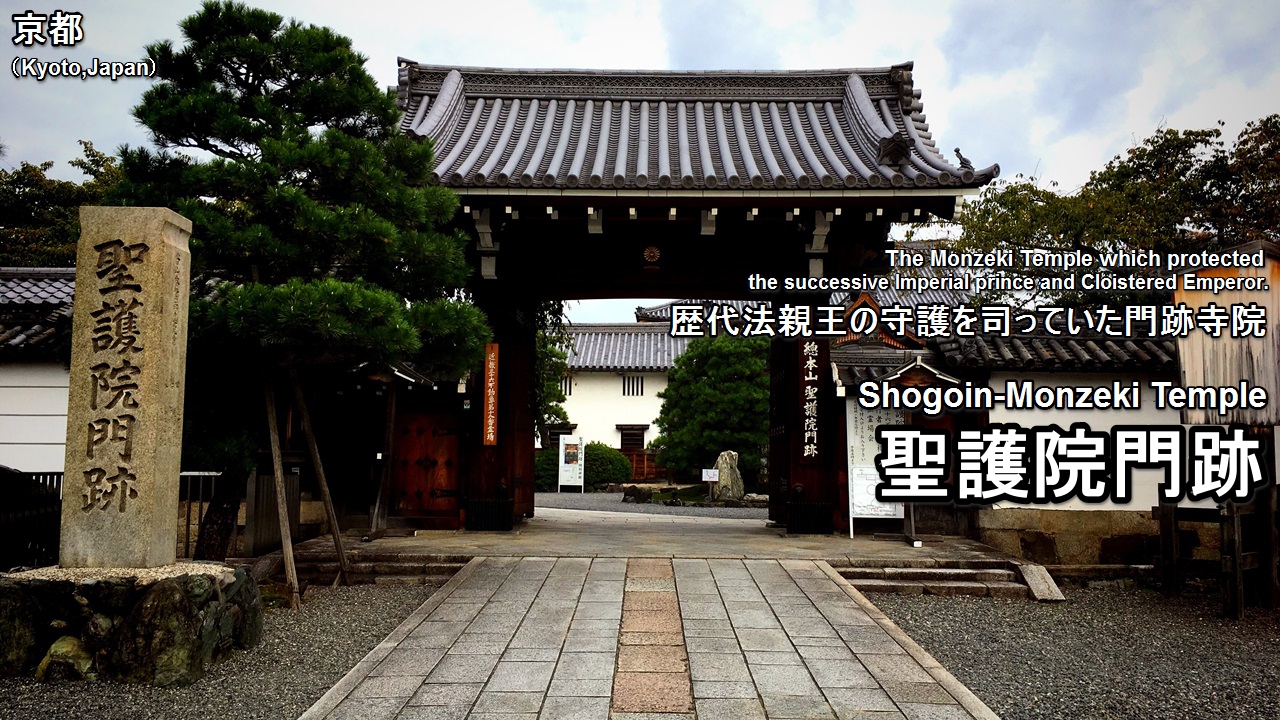
thank you very much for this post! it was very useful!
You are most welcome! Thank you for your comment!